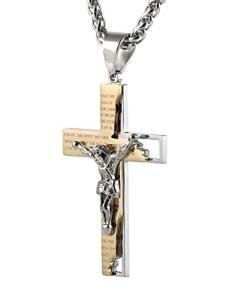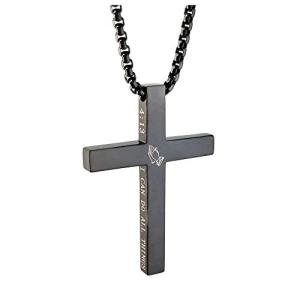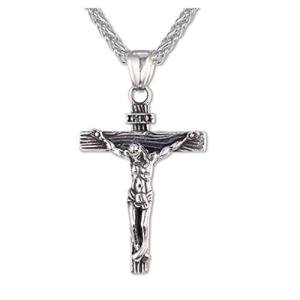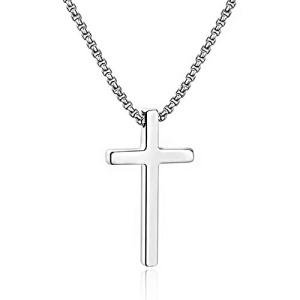The WWJD bracelet is more than just a simple piece of jewelry; it serves as a powerful reminder for many believers. The acronym WWJD stands for “What Would Jesus Do?” This phrase encourages individuals to reflect on their actions and decisions and to make choices that align with the teachings of Jesus Christ. Wearing a WWJD bracelet acts as a personal reminder to commit to living a Christ-centered life.
Originating in the 1990s, the WWJD bracelet quickly gained popularity among Christian communities and beyond. Often made of colorful silicone, these bracelets are affordable and easy to wear. Many people choose to wear them as a way to share their faith with others and to spark conversations about Christianity. Whether at school, work, or social gatherings, the WWJD bracelet can be a great conversation starter about faith and values.
Beyond serving as a trend, the WWJD bracelet encourages self-reflection and moral integrity. It invites individuals to pause and think about their choices in everyday situations, whether it’s dealing with a conflict, making a tough decision, or simply interacting with others. By asking themselves “What would Jesus do?” wearers reinforce their commitment to embodying compassion, love, and righteousness in their lives.
Many find that the WWJD bracelet is not only a fashionable accessory but also a source of strength and inspiration. As a tangible symbol of their faith, it helps believers stay grounded in their values and encourages them to act in ways that reflect the teachings of Jesus. Ultimately, the WWJD bracelet is a simple yet profound way to live out one’s faith in everyday life.
History of the WWJD Movement
The WWJD movement, which stands for "What Would Jesus Do?", began in the early 1990s as a way for Christians to reflect on their actions and choices in their daily lives. The phrase originally gained popularity from a book written by Charles Sheldon in 1896 titled "In His Steps." Sheldon’s story centered around characters who chose to ask themselves what Jesus would do in various situations, and this idea resonated deeply with many people over the years.
In the early '90s, youth minister and author Janie Tinklenberg revitalized the concept and made it a central theme in her youth group. She created the "WWJD" acronym to encourage young people to embrace the teachings of Jesus in their everyday decisions. It wasn’t long before the movement spread beyond her local community, leading to a surge of interest among Christians worldwide.
As the WWJD message gained traction, various merchandise was created to promote it, with the most popular item being the WWJD bracelet. These simple fabric or silicone bracelets featured the WWJD initials prominently, serving as a constant reminder for wearers to pause and consider their choices. The bracelets became particularly popular among teenagers and young adults, becoming a fashion statement alongside their religious significance.
The WWJD bracelet quickly evolved into a cultural phenomenon, not just a tool for personal reflection. Many churches and youth groups began using the bracelets for fundraising and outreach efforts, further spreading the message of following Jesus. The question "What Would Jesus Do?" became a part of everyday discussions, encouraging people of all ages to think about their faith and actions through the lens of their beliefs.
Meaning Behind the Bracelet's Message
The WWJD bracelet, which stands for "What Would Jesus Do?", serves as a powerful reminder for many people in their daily lives. The message encourages individuals to reflect on their actions and decisions by considering how Jesus would respond in similar situations. This simple yet profound question has impacted countless believers, guiding them towards a more Christ-like way of living.
Every time someone glances at their WWJD bracelet, they are reminded to embody the teachings of Jesus in their daily interactions. The bracelet is a tangible symbol of faith that keeps Jesus at the forefront of the wearer's mind. By wearing it, individuals commit themselves to a lifestyle of love, compassion, and service to others. It’s not just a piece of jewelry; it’s a meaningful declaration of one's intention to follow in the footsteps of the King of Kings.
The choice to wear a WWJD bracelet can also inspire engaging discussions about faith and personal beliefs. People who see the bracelet may be prompted to ask about its meaning, allowing the wearer to share their values and the message behind it. This can lead to deeper connections and opportunities to witness the love of Christ to others while reflecting on one’s personal journey of faith.
In a world filled with challenges and dilemmas, the WWJD bracelet serves as a constant source of inspiration. It encourages individuals to pause and think before they act, promoting a lifestyle that honors Jesus in both thought and deed. By embracing the question "What Would Jesus Do?", wearers of the WWJD bracelet strive to create a ripple effect of kindness and generosity, ultimately paving the way for a brighter, more loving community.
How to Wear It Meaningfully
Wearing a wwjd bracelet can be a powerful reminder of your faith and values. To wear it meaningfully, begin by understanding its purpose. The bracelet serves as a prompt to ask yourself "What Would Jesus Do?" in various situations throughout your life. It encourages you to reflect on your actions and decisions in light of Christian teachings.
When you put on your wwjd bracelet each morning, take a moment to pray or meditate on the day ahead. Consider the challenges you might face and how Jesus would approach them. This practice not only strengthens your faith but also sets a positive tone for the day. As you go about your activities, let the bracelet remind you to act with kindness, compassion, and integrity.
Another way to wear your wwjd bracelet meaningfully is to share its significance with others. Talk to friends and family about the bracelet and what it symbolizes for you. This can lead to deeper conversations about faith and the teachings of Jesus. By sharing your perspective, you inspire others to consider their own actions and how they might align with the example set by Christ.
Lastly, consider wearing your wwjd bracelet as a conversation starter. Whether it's at work, school, or during social gatherings, others may notice it and ask about its meaning. This opens the door for discussing your beliefs and inviting others to explore their own spirituality. By being open about your faith, you create opportunities for growth and connection.







